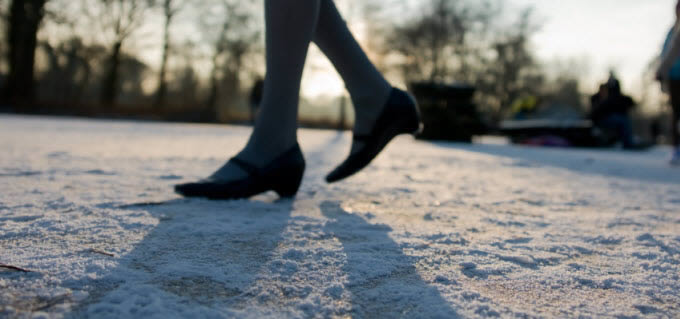Winter Safety: Hidden Dangers Revealed
Cold weather can be especially problematic for people with health conditions that affect mobility and balance. In addition to the external hazards created by icy conditions, exposure to cold can increase the risk of accident and injury by aggravating symptoms.
Nerve pain – Cold can affect how the body reacts to temperature changes for people with nerve pain and neuralgia. Cover your face and any exposed skin to help alleviate pain.
Muscle spasms – Cold can increase spasticity and stiffness in people with Multiple Sclerosis or muscle control disorders.
Numbness – Some people lack sensation and are unable to distinguish hot from cold. Avoid exposure to cold and keep a safe distance from radiators and heaters.
Blood pressure – People with blood pressure and vascular problems are vulnerable to cold and should avoid extended exposure.
Weakened Immunity – Virus spread more during winter months and people with neurological conditions such as Parkinson’s and Multiple Sclerosis have a higher susceptibility to illness and risk of complications from being sick.
Dizziness and off-balance – Slippery surfaces are especially dangerous for people with balance or weakness problems that lack the necessary reflexes and strength to traverse safely.
Fortunately the dangers of winter are manageable and don’t have to interrupt your life. To stave off the abovementioned risk factors for accident and injury this winter, keep warm and take the following basic precautions:
Wear appropriate footwear – Choose sturdy winter boots and shoes with soles made from slip-resistant rubber that provide traction on ice and snow.
Salt pathways – Public pathways will be salted for traction but you will need to salt or sand your own walkway, driveway, stairs and all paths you might take to reach the treated pavement.
Wear walking aids – Make a nominal investment in some winter safety gear to make it easier and safer to walk on icy surfaces. Wear rubber grips with steel cleats that slip over your shoes and improve traction, like Snow Paws. Cane users can add a cane tip designed for use on ice and snow, such as the Hugo Ice-O-Grip. Walking with trekking poles, which are also called Nordic poles, can help incentivize you to take walks and keep you safer on slippery surfaces.
Adopt the correct posture and gait for walking on icy ground – If you have to walk on ice or slippery surfaces, use a safe technique. Keep your center of gravity as low to the ground as possible. Tighten your core and engage your pelvic floor by contracting your pelvic floor muscles, an important element of core stability. Widen your stance. Take small steps instead of big strides, similar to shuffling your feet.
Exercise preventively – Exercise can help avoid accidents by training the body to react to shifts in balance. Bosu balls and yoga put your body in positions where balance will be required to train your core. Exercise programs that improve stability, balance, strength and reaction time have been shown to prevent falls in older people.1
As far as seasons go, winter is a wonderful time to be active outdoors as long as you take corrective measures to safeguard your wellbeing. Adapt your environment by treating the areas you traverse with salt for traction, and adapt yourself to your environment by dressing appropriately and using the correct gait, posture and walking gear to prevent accidental falls.
1 Balance, reaction time, and muscle strength in exercising and nonexercising older women: a pilot study. Lord SR, Caplan GA, Ward JA.




 and get Cash rewards!
and get Cash rewards!